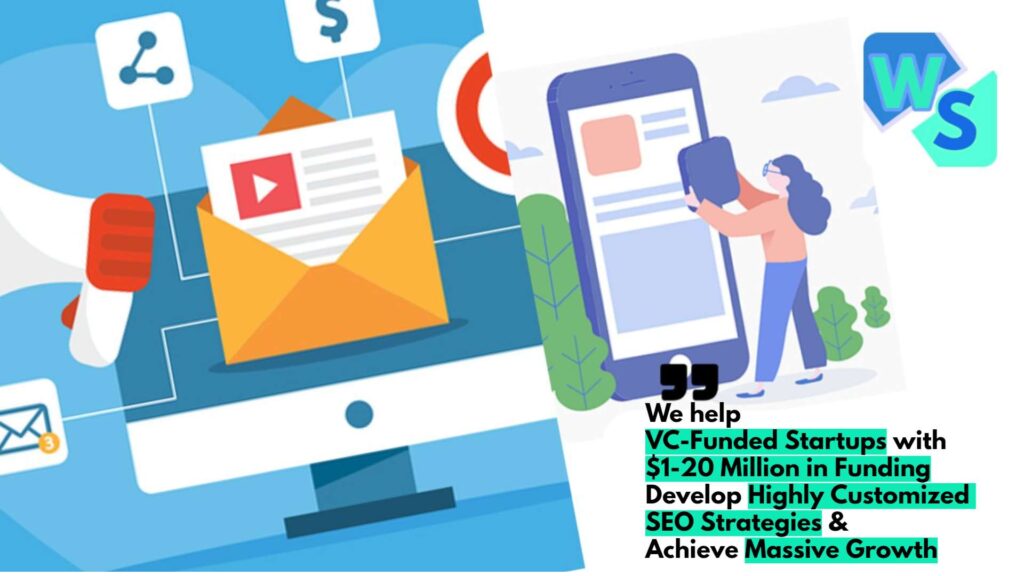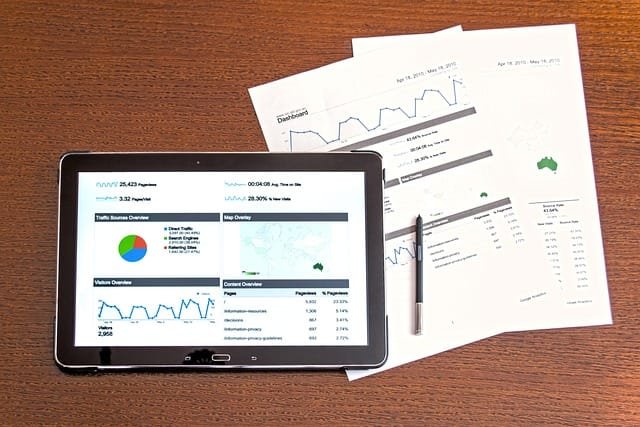Understanding Traditional Marketing
Definition of Traditional Marketing
Traditional marketing refers to the classic offline advertising methods used to promote products and services. This encompasses a range of techniques, including print advertising, television commercials, radio broadcasts, and direct mail campaigns. Unlike digital marketing, traditional marketing does not rely on the internet and has been integral to business promotion for decades. Typically, it involves engaging with consumers through physical materials such as flyers, billboards, and newspapers, aiming to establish brand awareness and drive sales.
For a deeper understanding of various approaches within this sphere, explore our articles on traditional marketing methods and traditional marketing channels.
Historical Roots of Traditional Marketing
The roots of traditional marketing extend well beyond the 20th century, beginning with the introduction of the Printing Press in the 1400s. This innovation provided businesses with a cost-effective means to reach potential customers through printed materials, effectively shaping a consumer-driven culture that persists today (Big Wave Digital Marketing).
Over the years, marketing strategies evolved, incorporating various offline methods that gained prominence, such as:
| Year Introduced | Marketing Method | Description |
|---|---|---|
| 1400s | Print Advertising | Use of newspapers, flyers, and brochures to communicate with customers. |
| 1922 | Radio Commercials | Utilizing radio broadcasts to promote products to a wide audience. |
| 1940s | TV Commercials | The emergence of television advertising, capturing the attention of diverse demographics. |
| 1960s | Billboards | Outdoor advertising on large structures to attract attention from passersby. |
Traditional marketing remained effective, though its ability to target specific audiences and measure success faced limitations compared to modern digital methods (Spyce Media). Despite the rise of digital marketing, traditional methods like traditional advertising strategies continue to hold relevance in certain contexts.
Understanding these historical foundations will empower you as CEOs, business owners, and marketing executives to appreciate the lasting impact of traditional marketing while navigating the current landscape, where both traditional and digital approaches must be integrated for optimal results.
Evolution of Marketing Strategies
Shift Towards Digital Marketing
The marketing landscape has undergone a significant transformation in the last few decades. Prior to 1990, traditional marketing methods accounted for 100% of business marketing budgets. Currently, businesses allocate approximately 28% of their marketing budget to traditional marketing, indicating a pronounced shift toward digital marketing methods (William & Mary Online).
Digital marketing provides advantages that traditional marketing cannot compete with, such as granular targeting and measurable results. With tools like pay-per-click (PPC) advertising, businesses can create highly specific audiences that match their ideal customer profiles using parameters like demographics and interests. Additionally, platforms like Facebook and Google enhance the precision of ad targeting by allowing marketers to reach users based on their online behavior and searches.
| Marketing Budget Allocation | Traditional Marketing | Digital Marketing |
|---|---|---|
| 1990 and Before | 100% | 0% |
| Current Average | 28% | 72% |
Role of Data in Modern Marketing
With the rise of digital marketing comes a data-driven approach that emphasizes metrics and analytics. Digital marketing now operates in a metrics-heavy arena where advertisers can closely monitor the performance of their expenditures. Advanced analytical tools and user-friendly dashboards provide advertisers with real-time insights into their campaigns, enabling them to understand the effectiveness of each dollar spent (William & Mary).
As marketers turn to data to optimize their strategies, it is crucial to develop strong number-crunching skills. The ability to interpret data and adjust marketing tactics accordingly has become an essential component of a successful marketing strategy. Despite the growth of digital marketing, it remains vital to integrate effective traditional marketing strategies that still resonate with consumers. Balancing both traditional and digital approaches can create a comprehensive marketing plan, allowing businesses to leverage the strengths of each channel effectively.
This evolution in marketing strategies reflects the ongoing relevance of traditional marketing ways, even in an increasingly digital world.
Comparison: Traditional vs. Digital Marketing
In the realm of marketing, you must weigh the pros and cons of both traditional and digital marketing strategies as you build your brand. Each approach has its unique set of advantages that cater to different business goals and target audiences.
Advantages of Traditional Marketing
Traditional marketing continues to hold significant value, especially for businesses targeting specific demographics. Here are some of its key benefits:
| Advantage | Description |
|---|---|
| Broad Reach | Traditional methods, such as TV commercials and print ads, tend to reach a wide audience, particularly older demographics who may not engage with digital platforms. (Salespanel) |
| Trust and Credibility | Many consumers view traditional advertising as more trustworthy than digital ads, particularly in sectors like healthcare and finance. |
| Less Ad Blocking | Unlike digital ads, traditional ads on television and in print formats are less likely to be ignored or blocked, ensuring your message is received. |
| Direct Mail Effectiveness | Direct mail marketing has proven effective, with response rates of 4.9% for house lists compared to 1.0% for prospect lists, showcasing its efficacy. (Spyce Media) |
| Personal Interaction | Face-to-face sales interaction allows for real-time feedback and relationship building, enhancing customer engagement. (Salespanel) |
For further insight into specific traditional marketing avenues, refer to our traditional marketing methods.
Advantages of Digital Marketing
Digital marketing has rapidly evolved, offering unique benefits that can complement or even surpass those found in traditional marketing. Here are some advantages you should consider:
| Advantage | Description |
|---|---|
| Granular Targeting | Digital marketing allows precise targeting through platforms like social media and search engines. You can define parameters such as demographics and interests to optimize ad effectiveness. (William & Mary Online) |
| Cost-Effectiveness | Many digital marketing strategies are more affordable than traditional options, enabling small businesses to engage potential customers without a massive budget. |
| Measurable Results | Digital platforms provide analytics that let you track performance, engagement, and conversion rates in real-time, allowing for immediate adjustments. |
| Flexibility | Digital campaigns can be modified quickly based on performance, allowing businesses to pivot strategies efficiently. |
| Higher Engagement | Digital marketing encourages interaction with customers through comments, shares, and likes, fostering a two-way communication channel. |
To deepen your understanding of digital marketing, explore our section on traditional vs digital marketing.
When assessing your marketing strategy, consider how each approach aligns with your overall objectives. Balancing both traditional and digital strategies can optimize your reach and effectiveness in today’s marketplace.
Importance of Traditional Marketing
Relevance in Current Marketing Landscape
In today’s dynamic marketing environment, traditional marketing remains significant despite the rise of digital techniques. The evolving landscape does not render traditional methods obsolete; instead, they continue to complement digital strategies, offering businesses a well-rounded approach to reach their targets. Traditional marketing methods, such as print advertising and TV commercials, still engage demographics that may not be reached effectively through digital channels. In fact, marketers are advised to utilize a hybrid approach, balancing both digital and traditional strategies to optimize reach and impact.
The following table outlines the main components regarding the relevancy of traditional marketing methods:
| Factor | Traditional Marketing | Digital Marketing |
|---|---|---|
| Audience Reach | Broader reach across various demographics | Granular targeting through precise online metrics |
| Engagement Method | Tangible interaction through media | Immediate interaction through comments and shares |
| Analytics Capability | Limited data availability | In-depth analytics for real-time adjustments |
| Long-term Brand Loyalty | Established methods build lasting relationships | Brand loyalty through constant digital engagement |
For further insights into these methods, consider reviewing our article on traditional marketing methods.
Targeting Specific Audiences
Although digital marketing has enhanced the precision of targeting, traditional marketing is still effective for specific audience segments, especially those resistant to digital media. Techniques such as direct mail campaigns allow businesses to deliver tailored messages to predefined groups. This method capitalizes on established relationships and familiarity with the brand, thus leading to higher conversion rates.
In scenarios where marketing teams seek to connect with local communities or demographics less engaged online, traditional media offers distinct advantages. It provides tangible touchpoints that can reinforce brand recognition and presence in the market.
Understanding which audience aligns with particular methods is essential for maximizing marketing efforts. Here’s a breakdown of targeting capabilities:
| Marketing Type | Audience Targeting Capability |
|---|---|
| Traditional Marketing | Focused on broad demographic segments |
| Digital Marketing | Enables targeting based on behavior, interests, and location |
As you explore different strategies, consider looking into traditional marketing strategies to understand the methods best suited for your audience.
Traditional Marketing Methods
Traditional marketing effectively reaches target audiences through various offline channels. This approach includes methods such as print advertising and TV and radio commercials, both of which have long been staples in the marketing landscape.
Print Advertising
Print advertising is a type of advertising that utilizes printed media to promote products or services. This includes newspapers, magazines, brochures, flyers, and catalogs. Despite the rise of digital media, print advertising still holds value as an element of the traditional marketing mix due to its ability to target specific demographics and engage readers in a tangible way.
| Medium | Reach | Cost Level |
|---|---|---|
| Newspapers | Local to National | Moderate to High |
| Magazines | Niche Audiences | High |
| Flyers | Local/Community | Low to Moderate |
| Brochures | Local/Specific Events | Moderate |
Printed materials often serve to create brand awareness and can be strategically placed within high-traffic areas or relevant publications. For instance, a full-page newspaper advertisement can significantly enhance visibility among local consumers. For more information on different channels, refer to our article on traditional marketing channels.
TV and Radio Commercials
Television and radio commercials represent another critical component of traditional marketing efforts. TV commercials can reach a vast audience during events like the Super Bowl, where viewership peaks and advertising spots command high prices. Radio commercials, on the other hand, can effectively target local markets based on the station’s audience demographics.
| Medium | Audience Reach | Cost Level |
|---|---|---|
| Television | National to Local | High |
| Radio | Local | Low to Moderate |
Both forms utilize audio-visual elements to create memorable experiences, making them effective for brand storytelling. However, unlike digital marketing, measuring the performance and return on investment (ROI) for traditional media can be challenging (Spyce Media). If you’re interested in further exploring various methods, take a look at our section on traditional marketing methods.
While traditional marketing may come with higher costs compared to digital strategies, it has unique advantages in credibility, brand recognition, and emotional connection with your audience. Understanding these methods and incorporating them into your overall strategy can help you leverage the best of both traditional and digital marketing approaches for optimal impact. For insights on integrating both approaches, you can visit our article on integrating traditional and digital marketing.
Effectiveness of Traditional Marketing
Evaluating the effectiveness of traditional marketing strategies involves understanding their reach across various demographics and comparing their return on investment (ROI) against digital marketing methods.
Reach Among Different Demographics
Traditional marketing often has varied effectiveness depending on the age and behaviors of the target audience. Research indicates that only 18% of those aged 18 to 29 watch local news, while a significant 57% of individuals aged 65 and over still engage with it (Impact Group Marketing). This highlights the importance of aligning your marketing strategy with the demographic profile of your audience.
Many traditional marketing campaigns, such as print ads, TV commercials, and billboards, have broad reach and continue to build trust, especially among older consumers. These methods are less likely to be evaded by audiences employing ad blockers, ensuring that your messages effectively penetrate the market.
| Demographic Age Group | Percentage Engaging with Traditional Media |
|---|---|
| Ages 18 to 29 | 18% |
| Ages 30 to 49 | Data not available |
| Ages 50 to 64 | Data not available |
| Ages 65 and above | 57% |
Traditional marketing techniques, including direct mail, show promise across age groups. A USPS study suggests that millennials are more inclined to respond to marketing collateral received via direct mail than older generations, with a higher probability of action taken compared to Gen X or Baby Boomers (Salespanel).
ROI Comparison: Traditional vs. Digital Marketing
The ROI for traditional marketing can vary widely based on the medium used and the effectiveness of the message. While digital marketing boasts advantages such as precision targeting through paid ads on social media—which can considerably reduce costs and enhance engagement—traditional marketing retains unique benefits, particularly in business-to-consumer (B2C) interactions.
Traditional campaigns often foster a sense of reliability and connection, particularly when utilizing channels that consumers actively engage with, such as TV commercials and print media. To illustrate, here is a simplified ROI comparison:
| Marketing Type | Average ROI | Notes |
|---|---|---|
| Traditional Marketing | 5.1:1 | Broader reach but varied engagement depending on demographics |
| Digital Marketing | 8:1 | More targeted approach with customization options |
Understanding the ROI of traditional marketing requires analyzing not just immediate returns but also long-term benefits like brand trust and customer loyalty (Salespanel).
By considering both the reach among demographic segments and the nuanced ROI of your marketing efforts, you can tailor strategies that effectively leverage the strengths of traditional marketing, ensuring your campaigns resonate with your intended audience. For additional insights, explore our articles on traditional marketing strategies and traditional marketing examples.
Retention of Traditional Marketing
Understanding the retention of traditional marketing strategies is crucial for your business, especially in the B2C sector. Despite the rise of digital platforms, traditional marketing retains unique benefits that can enhance your brand’s outreach.
Unique Benefits in B2C Sector
Traditional marketing excels at connecting with consumers. It provides broad reach and garners more trust, particularly among older demographics. Platforms such as print ads, billboards, and television commercials do not face the same avoidance tactics like ad blockers, allowing your message to reach potential customers effectively (Salespanel).
The following table summarizes the unique advantages of traditional marketing in the B2C sector:
| Benefits | Description |
|---|---|
| Broad Reach | Engages a wider audience including those less engaged with digital media. |
| Trust and Credibility | Older consumers often perceive traditional ads as more trustworthy. |
| Less Ad Avoidance | Audiences cannot easily skip or block traditional marketing methods. |
| Tangibility | Physical marketing materials (like brochures or direct mail) create a real connection. |
Direct Mail and Millennial Response
Direct mail, traditionally perceived as targeting older generations, is showing promising engagement among millennials as well. A study by USPS highlights that millennials are more likely to take action on marketing materials received via direct mail compared to older generations like Gen X and Baby Boomers (Salespanel).
The table below illustrates the response rates among different demographics when receiving direct mail:
| Demographic | Response Likelihood (%) |
|---|---|
| Millennials | 79 |
| Gen X | 67 |
| Baby Boomers | 57 |
These statistics underlie the effectiveness of direct mail in reaching millennials and demonstrate a significant opportunity for brands to capitalize on this method. By integrating traditional marketing tools alongside digital efforts, you can create a comprehensive strategy that effectively captures and engages your target audience.
For further insights into various traditional marketing strategies, explore our articles on traditional marketing methods and traditional marketing statistics.
Future Outlook for Traditional Marketing
Broadcasting Strategies
Broadcasting remains a vital component of marketing strategies, effectively reaching a massive audience. Television and radio advertising continue to hold relevance, even with the surge of streaming platforms like Netflix. Many consumers still engage with traditional broadcasting methods, which provide an opportunity to introduce products and services to a wide demographic (Salespanel).
| Medium | Audience Reach |
|---|---|
| Television | Over 280 million viewers in the U.S. |
| Radio | Approximately 90% of adults listen to radio each week |
Traditional broadcasting methods tend to engender trust among consumers, especially older demographics who may prefer familiar media formats. Despite the rise of digital alternatives, traditional advertising via broadcast channels remains an effective means to convey marketing messages.
Face-to-Face Sales Interactions
Face-to-face interactions with sales representatives continue to serve as an impactful traditional marketing tactic. This method allows for a closer observation of potential customers’ reactions and fosters a deeper understanding of their needs. Engaging customers directly can significantly enhance sales effectiveness, making it a valuable strategy in building relationships and trust (Salespanel).
However, deploying this strategy can be costly due to the high demand for skilled salespeople. The psychological element of in-person sales is crucial; understanding customer behavior and requirements is essential for successful interactions. Direct engagement not only helps to close sales but also provides significant insights into consumer preferences.
Despite the advancements in digital marketing platforms, the human touch of face-to-face communication persists as a unique advantage in traditional marketing. It is particularly effective for selling complex products, where understanding the customer’s needs is paramount. For insights on integrating traditional and digital methodologies, refer to our discussion on integrating traditional and digital marketing.
The future of traditional marketing holds promise as it adapts to shifting consumer preferences while maintaining its core strengths. Brands that combine methods like broadcasting and personal interactions can maximize outreach and engagement.




















